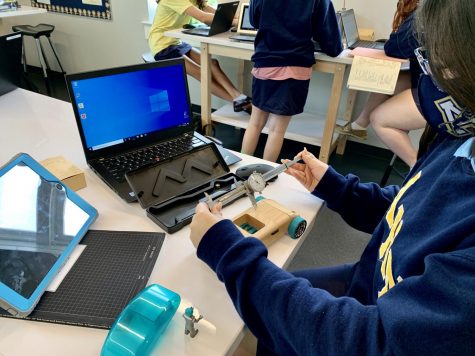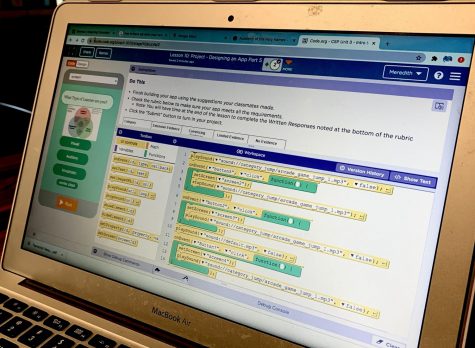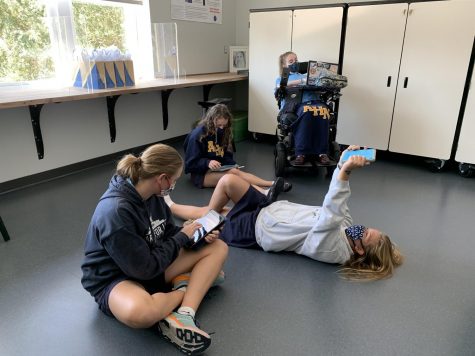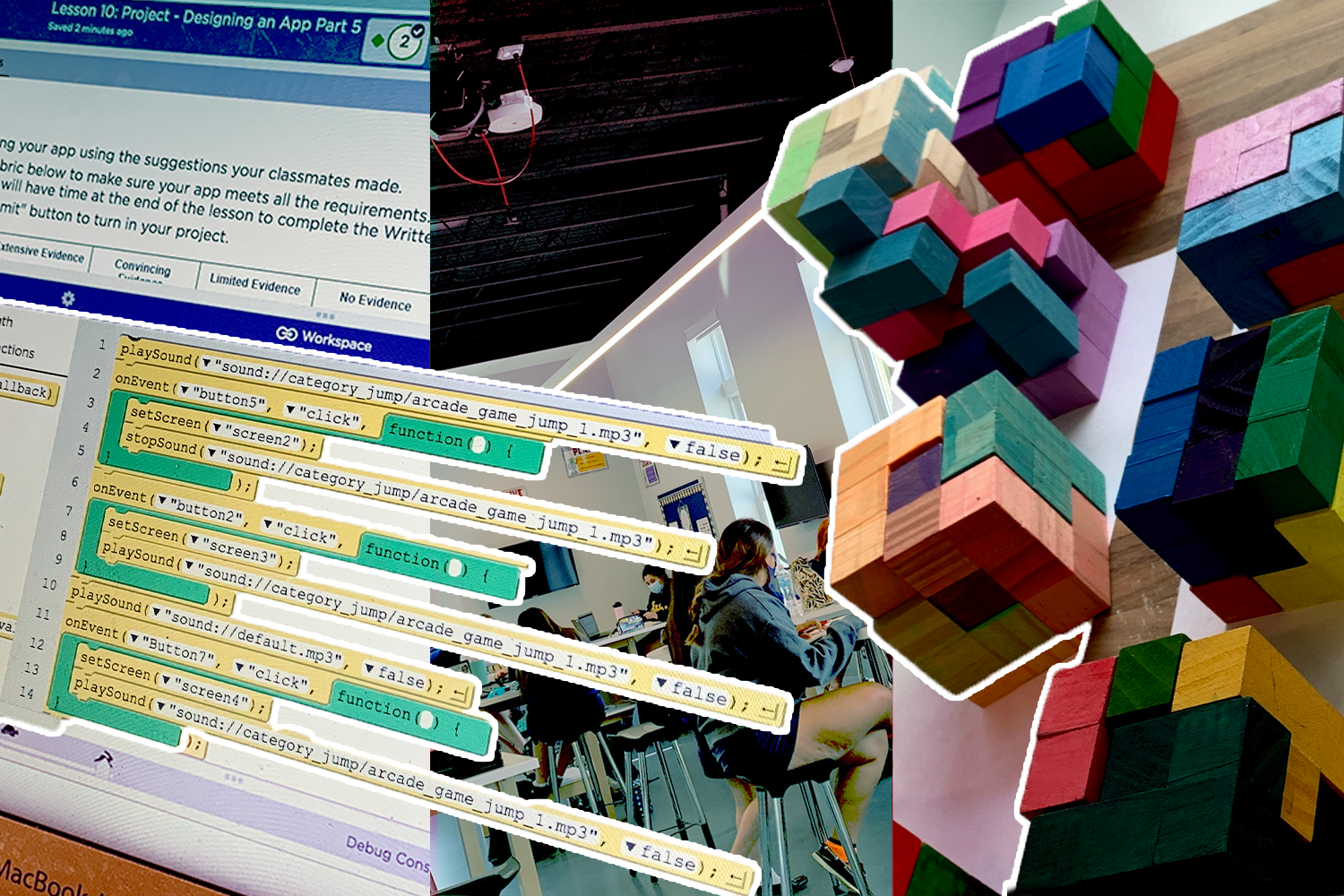Create, Invent, Discover: Exploring Academy’s STEM Electives
October 27, 2020
While COVID has brought many aspects of the 2020 school year to a halt, nothing is ever stagnant in Academy’s STEM electives. The engineering, technology, and computer science classes have each been hard at work on hands-on, collaborative projects that provide students both an exploration of STEM fields and opportunities to make a difference on campus and in the community.
While engineering and computer science have been aspects of the Academy’s curriculum for almost four years, this school year welcomed an official engineering room and maker space as part of the high school renovations, a new engineering and technology course, and a new teacher, Tyler Mokris, to the computer science and engineering departments.
Mokris graduated from the University of Florida with a Master’s degree in Civil Engineering. Prior to teaching at the Academy, Mokris was an engineer at Hazen and Sawyer for three years. Now, he teaches Intro to Engineering Design, Principles of Engineering, and AP Computer Science Principles.

In Mokris’ Intro to Engineering Design (IED) class, students are introduced to the different fields of engineering and the tools that each type of engineer may use in their work. Last month, students completed their first project, the puzzle cube, which required students to design six pieces of a puzzle out of wooden blocks. The ideas were prototyped using LEGOs, sketched in their engineering notebooks, modeled using computer-aided design (CAD), and finally physically pieced together and painted to create a wooden block puzzle.
“In IED, we’re doing a lot of problem solving and critical thinking. We’re realizing that there are problems we don’t have answers to right away, and it’s going to take a while to figure them out. To get to the solutions, we use the resources available to us,” said Mokris.
This month, IED students are exploring statistical analysis with tools frequently used by engineers. Students are using dial calipers to make extremely precise measurements and Excel spreadsheets to document those measurements and find patterns within the data.
“In this unit we’re learning Microsoft Excel, which is a very useful tool for when we start working with large data sets. In most engineering applications, Excel is widely used,” said Mokris.
While IED students are learning the fundamentals of engineering, Mokris’ AP Computer Science Principles (CSP) classes are already applying what they’ve learned in class in their semester app project. Students are tasked with designing an app themselves from scratch; this includes devising the concept, designing the layout, and implementing full-functioning features.

As everyone must create a unique app, CSP students have put their creativity to work, as apps range in functionality from discovering one’s own learning styles, to helping other students learn how to write professionally. Students are using a website called Code.org to code their apps.
“There’s a lot of different things you have to do for each function of your app, and each function needs a different line of code. For example, if I want a sound in my app, I have to find a way to code it in. It’s cool how we’re putting together everything we’re learning in computer science so far in a real-world application,” said Meredith Nitchals (‘21).
The fundamentals of computer science are also being implemented in the Academy’s Engineering and Technology Integration (ETI) course. ETI is a course added this year that combines engineering and computer science students to develop projects in a marriage of the two disciplines. The course is offered to girls who have either completed two years of AP Computer Science or two years of engineering electives.
This year, ETI teacher Anne Wynn is entering the students in the Florida Atlantic University Senior Showcase, where they will compete against other senior students in designing projects related to delivery and transportation. These projects require the integration of skills learned in previous engineering and computer science classes to complete a project that maximizes technological efficiency.

“Our project this year relates to designing a delivery system for hurricane supplies to older people who can’t leave their homes to shop for themselves. We can either build something physically, or create a program that autonomously communicates with senior citizens, takes their order, and delivers the supplies to their door,” said Rachel Troy (‘21).
Other engineering classes are finding ways to make a difference in the community. Mokris’ Principles of Engineering (POE) class are completing a semester-long project to design and construct a sustainable bench for campus that accommodates social-distancing.
After learning about sustainability, which focuses on meeting the needs of the present without compromising the ability of future generations to meet their needs, POE students were tasked with the bench project that incorporates resources and processes that will maintain an ecological balance.
The class is divided into two teams who are each designing their own benches. The benches must be entirely made of sustainable resources and processes, and students are responsible for researching materials and creating bench prototypes using computer-aided design. The ideas will soon be presented to Principal Stephanie Nitchals and President Art Raimo for approval.
While it’s been easy to put many things on hold in the midst of COVID, the STEM classes at Academy are reluctant to give up their fervor. Whether it’s in learning the basics of computer science or engineering, building ways to safely maintain social contact, or inventing new systems to help those in need, Academy’s STEM teachers and classes always find ways to persevere.

“It’s been really exciting so far teaching at Academy, and I’m very impressed with everyone’s work ethic. Each student has been challenging themselves and pushing themselves to be better, and that’s what learning and discovery are about,” said Mokris.

